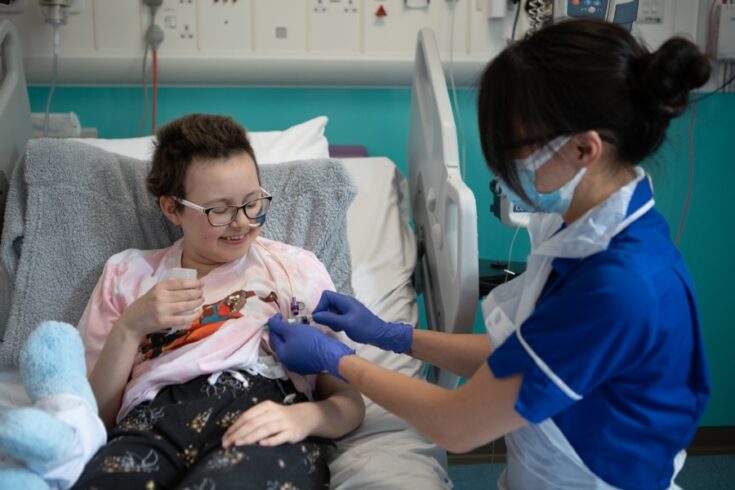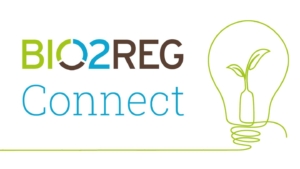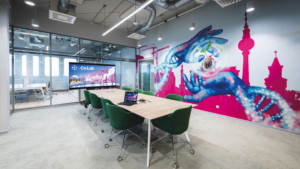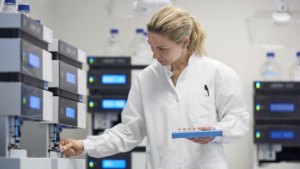
A ray of hope in leukaemia
A child with recurrent T-cell leukaemia was given base-edited T-cells in a world-first application of a base-edited cell therapy.
In 2021, Alyssa, a 13-year-old girl from Leicester, after a long struggle with what her family thought to be colds, viruses, and general tiredness, was diagnosed with T-cell acute lymphoblastic leukaemia. After that her life changed dramatically. She had all existing conventional treatments. Extensive chemotherapy, a bone-marrow transplant but her disease returned and there were no more alternatives in sight. Her only alternative left seemed to be palliative care. But the much-needed ray of hope emerged in spring 2022. Since May Alyssa is the first patient recruited in the TvT clinical study at the Great Ormond Street Institute of Child Health’s (GOSH) Bone Marrow Transplant (BMT) Unit which aims to administer ‘universal’ CAR T-cells pre-manufactured from a healthy volunteer donor. These cells were altered utilizing a novel base-editing method invented by David Liu at Board Institute Boston and developed by a team of UCL researchers lead by Professor Waseem Qasim.
Alyssa was then implanted with a Chimeric Antigen Receptor (CAR) to allow them to track for and kill malignant T-cells while not fighting one another. After being in remission for 28 days, Alyssa received a second bone marrow transplant to repair her immune system, and now, six months later, she is healing well at home with her family and continues her post-BMT care at GOSH.
The same team from GOSH and University College London Great Ormond Street Institute of Child Health pioneered the use of genome-edited T-cells (CAR T-cells) to treat B-cell leukaemia in 2015, and they recently reported on trials for children utilizing CRISPR/Cas9 techniques. However, treating certain other forms of leukaemia in this manner has proven more challenging. T-cells engineered to recognize and target malignant cells, ended up killing each other during the laboratory production process. To develop complete banks of ‘universal’ anti-T-cell CAR T-cells for this work, many additional DNA modifications were required. Healthy donor T-cells arranged via the Anthony Nolan registry were engineered at the Great Ormond Street Hospital clean room facility with several sequential alterations to make these cells.
These changes were made by ‘base editing,’ which involves chemically changing single nucleotide bases (letters of the DNA code) that provide instructions for specific proteins. The outcome of this procedure is modified CAR T-cells that are administered to the patient and quickly detect and destroy T-cells in the body, including leukemic T-cells. This novel procedure is not generating breaks in the DNA, in comparison to previous therapies relying on gene-cutting approaches like TALENS or CRISPR/Cas9. This allows for more alterations and less concerns of chromosomal damage. If this procedure is successful, the patient can then undergo a bone marrow transplant to rebuild their immune system. The same methodology is also being researched for the purpose of correcting detrimental mutations in DNA coding for a range of hereditary disorders.
We designed and developed the treatment from lab to clinic and are now trialing it on children from across the UK – in a unique bench to bedside approach. Alyssa’s story is a great demonstration of how, with expert teams and infrastructure, we can link cutting edge technologies in the lab with real results in the hospital for patients. It’s our most sophisticated cell engineering so far and paves the way for other new treatments and ultimately better futures for sick children, Professor Waseem Qasim, Professor of Cell, and Gene Therapy at UCL GOS ICH and Consultant Immunologist at GOSH said.
Alyssa is the first reported patient in the world to have had base-edited cell therapy, and she is presently healing at home. Alyssa and her family are relieved that her leukaemia is no longer detectable, but she will need to be constantly monitored for some years to come. Still, it was never a question of whether Alyssa wanted to undergo this experimental treatment. Once I do it, people will know what they need to do, one way or another, so doing this will help people – of course I’m going to do it, the inspiring young girl said.
This therapy’s clinical study is now open, with the goal of enrolling up to ten patients with T-cell leukaemia who have exhausted all conventional treatment options. If broadly successful, the GOSH Bone Marrow Transplant and CAR T-cell therapy teams think it may be administered to children earlier in their treatment journey, when they are less unwell. Further applications for different forms of leukaemia are expected in 2023.


 BIOCOM / aminul788 - Adobe Stock
BIOCOM / aminul788 - Adobe Stock Bayer Co.Lab
Bayer Co.Lab